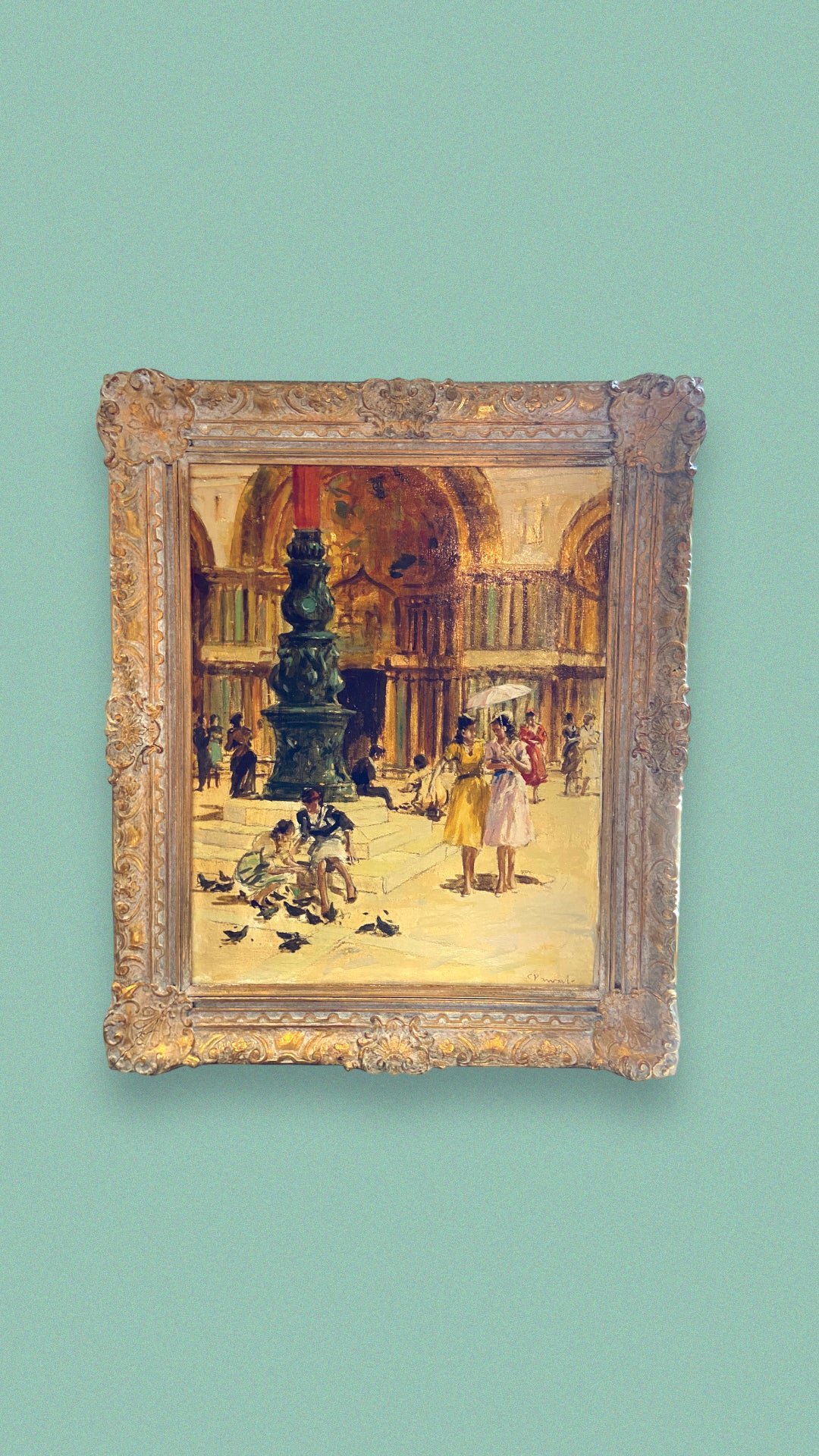aMe | Liberte
Cityscape - Venice, St Marks Square
Cityscape - Venice, St Marks Square
Couldn't load pickup availability
Beautiful framed oil painting by renowned artist,
ARTIST: Cosimo Privato (Italian, 1899 - 1971).
TITLE: Cityscape - Venice, St Marks Square.
MEDIUM: oil on canvas.
CONDITION: Missing a few microscopic flakes of paint & Minor craquelure. No visible in-paint under UV light.
ART SIZE: 20 x 16 inches / 50 x 40 cm.
FRAME SIZE: 26 x 22 inches / 66 x 55 cm.
SIGNATURE: lower right.
CATEGORY: old antique vintage painting for sale.
BIOGRAPHY: Cosimo Privato was born in 1899 and was largely inspired creatively by the 1900s and 1910s. The first decades of the twentieth century were defined by the dynamic development of visual and pictorial art. These decades were an time of experimentation, with artists delving into ideas surrounding Post-Impressionism, Expressionism and Abstraction. These developments inspired artist communities and collectives across the globe, with many groups developing different methods of communicating their ideas. After the First World War, artists endeavoured to explore psychological uses of art in response to the horrors they had witnessed. Dadaism, an absurdist movement inspired directly by the events of the war, spread to a number of countries across Europe and began the careers of famous artists such as Marcel Duchamp, Francis Picabia, Hannah Hoch and Kurt Schwitters. The movement of Surrealism, inspired by ideas concerning psychology and the subconscious which were first developed by Sigmund Freud and Carl Jung, was developed from the ideas posed by Dada. The first twenty years of the twentieth century are considered as the period in art history where modernist and modern ideas first began to have cultural effects. They were a prolific time in the art world, and industrial advances such as mechanisation led to other disciplines like architecture, led by the work of Le Corbusier and Gerrit Rietveld, to develop at an equally high rate. The notion of a shared discipline across all modes of art was epitomised in the Bauhaus movement, which became a leading way of thinking about art. These philosophies that we associate today with modern and contemporary art can be traced back to the diverse range of artworks produced at this time. Across the world, Expressive painting continued to be explored and developed in many countries. In France in the early 1900s, the Nabis delved into this movement, and were soon followed by German groups such as Die Brucke and Der Blaue Reiter. Through this movement the careers of some famous artists such as Kirchner, Franz Marc, and Wassily Kandinsky were developed.













